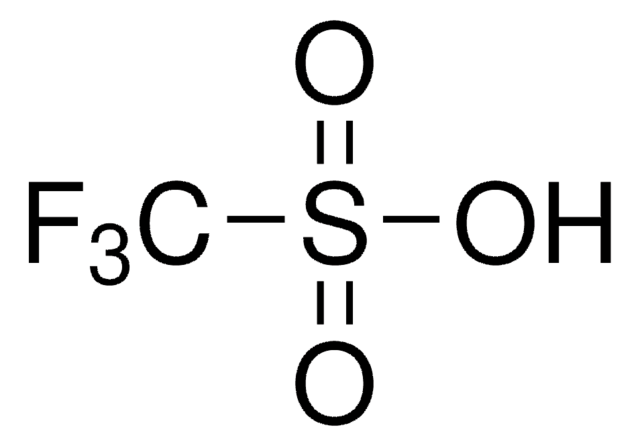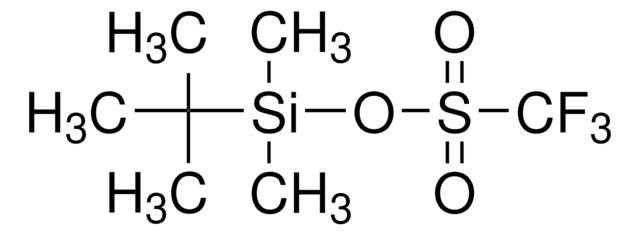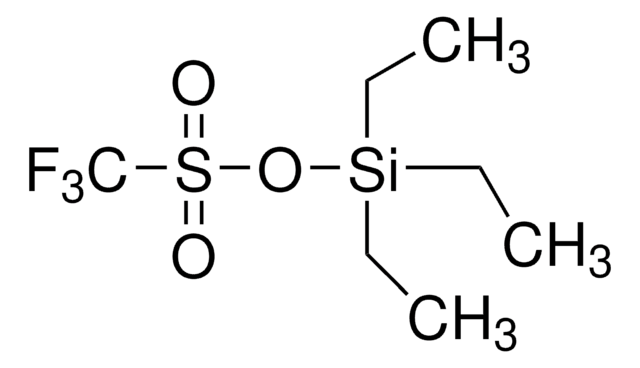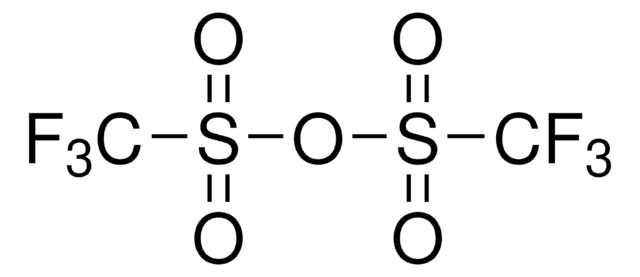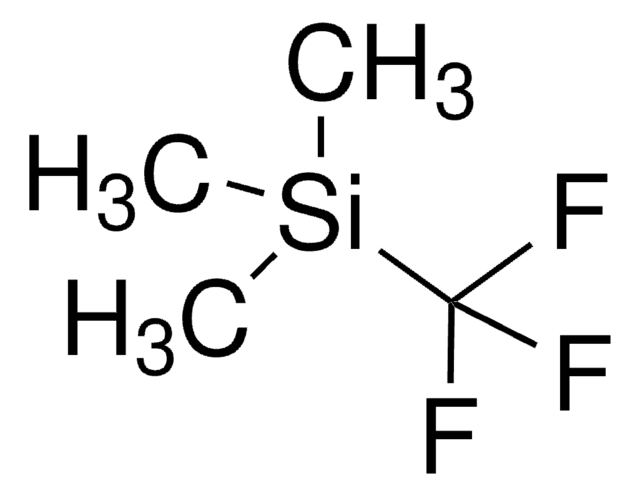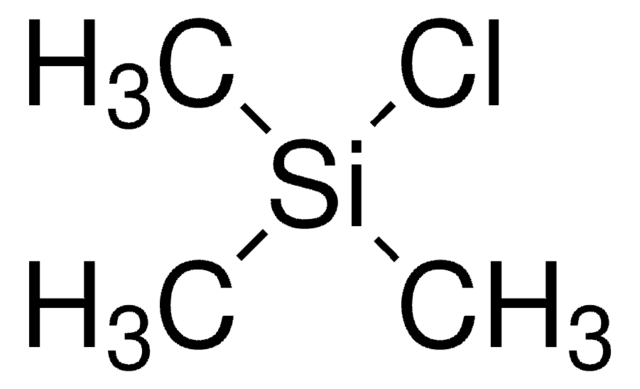225649
Trimethylsilyl trifluoromethanesulfonate
99%
Synonyme(s) :
TMS triflate, TMSOTf, Trifluoromethanesulfonic acid trimethylsilylester
About This Item
Produits recommandés
Niveau de qualité
Pureté
99%
Forme
liquid
Indice de réfraction
n20/D 1.36 (lit.)
Point d'ébullition
77 °C/80 mmHg (lit.)
Densité
1.228 g/mL at 25 °C (lit.)
Groupe fonctionnel
fluoro
triflate
Chaîne SMILES
C[Si](C)(C)OS(=O)(=O)C(F)(F)F
InChI
1S/C4H9F3O3SSi/c1-12(2,3)10-11(8,9)4(5,6)7/h1-3H3
Clé InChI
FTVLMFQEYACZNP-UHFFFAOYSA-N
Vous recherchez des produits similaires ? Visite Guide de comparaison des produits
Application
It can be used:
- As a silylating agent for the synthesis of trimethylsilyl-enol ethers from esters of α-diazoacetoacetic acid.
- To activate benzyl and allyl ethers for the alkylation of sulfides.
- To facilitate the conversion of Diels-Alder adducts of Danishefsky′s diene to cyclohexenones without the formation of methoxy ketone by-product.
- To prepare difluoroboron triflate etherate, a powerful Lewis acid especially in acetonitrile solvent.
- As a reagent in a Dieckmann-like cyclization of ester-imides and diesters.
It may also be used to catalyze:
- Acylation of alcohols with acid anhydrides.
- Reductive coupling of carbonyl compounds with trialkylsilanes to form symmetrical ethers.
- Glycosidation of 4-demethoxydaunomycinones with 1-O-acyl-L-daunosamine derivatives.
À utiliser avec
Mention d'avertissement
Danger
Mentions de danger
Conseils de prudence
Classification des risques
Flam. Liq. 3 - Skin Corr. 1B
Risques supp
Code de la classe de stockage
3 - Flammable liquids
Classe de danger pour l'eau (WGK)
WGK 3
Point d'éclair (°F)
77.0 °F - closed cup
Point d'éclair (°C)
25 °C - closed cup
Équipement de protection individuelle
Faceshields, Gloves, Goggles, type ABEK (EN14387) respirator filter
Faites votre choix parmi les versions les plus récentes :
Déjà en possession de ce produit ?
Retrouvez la documentation relative aux produits que vous avez récemment achetés dans la Bibliothèque de documents.
Les clients ont également consulté
Notre équipe de scientifiques dispose d'une expérience dans tous les secteurs de la recherche, notamment en sciences de la vie, science des matériaux, synthèse chimique, chromatographie, analyse et dans de nombreux autres domaines..
Contacter notre Service technique